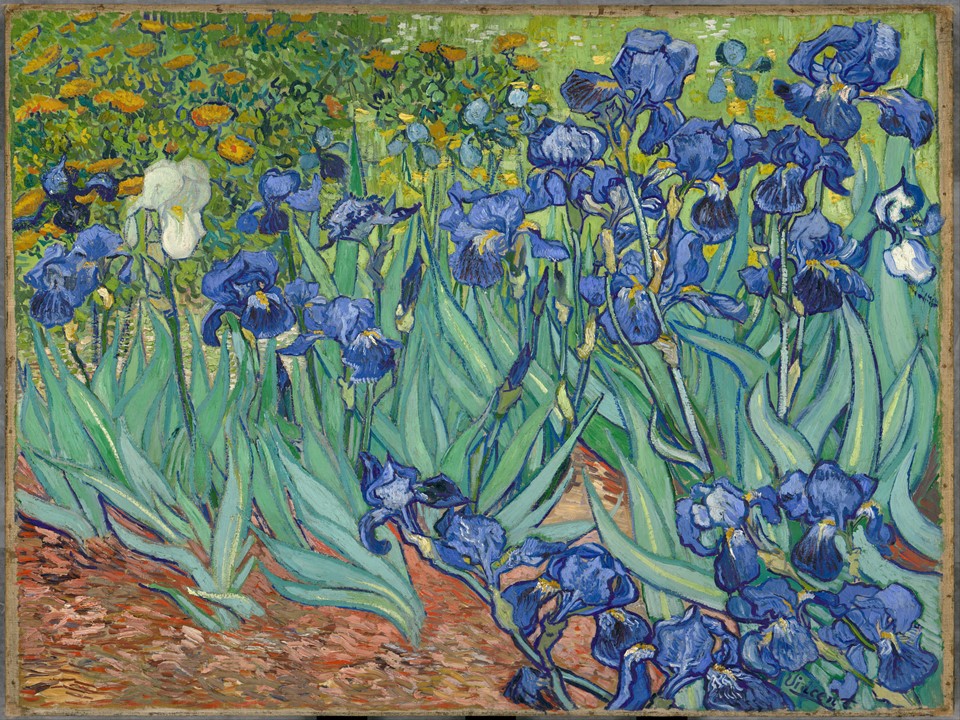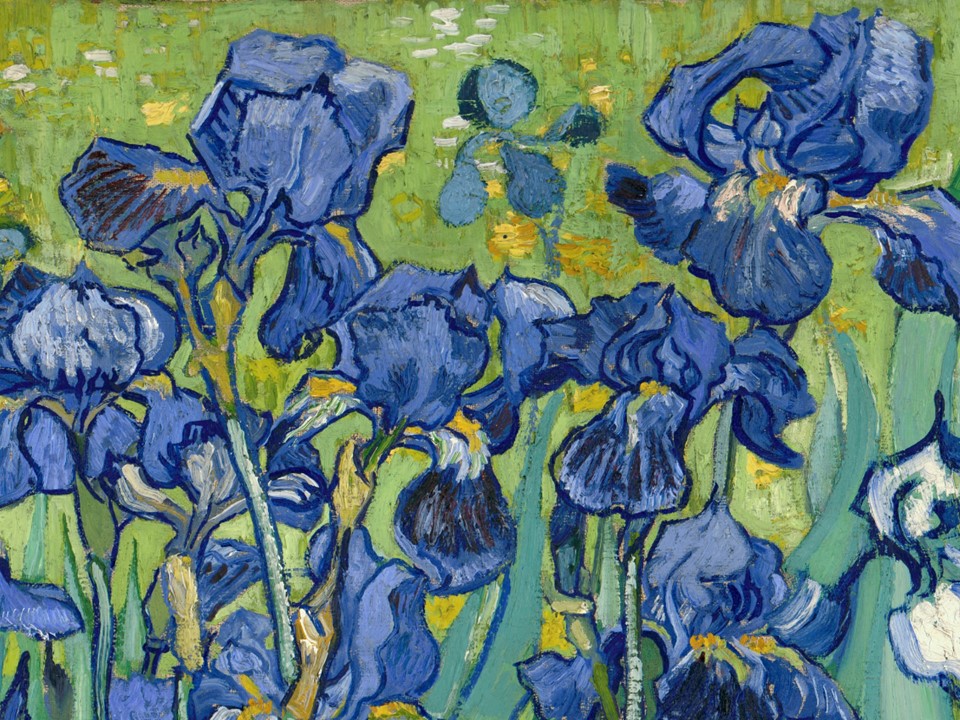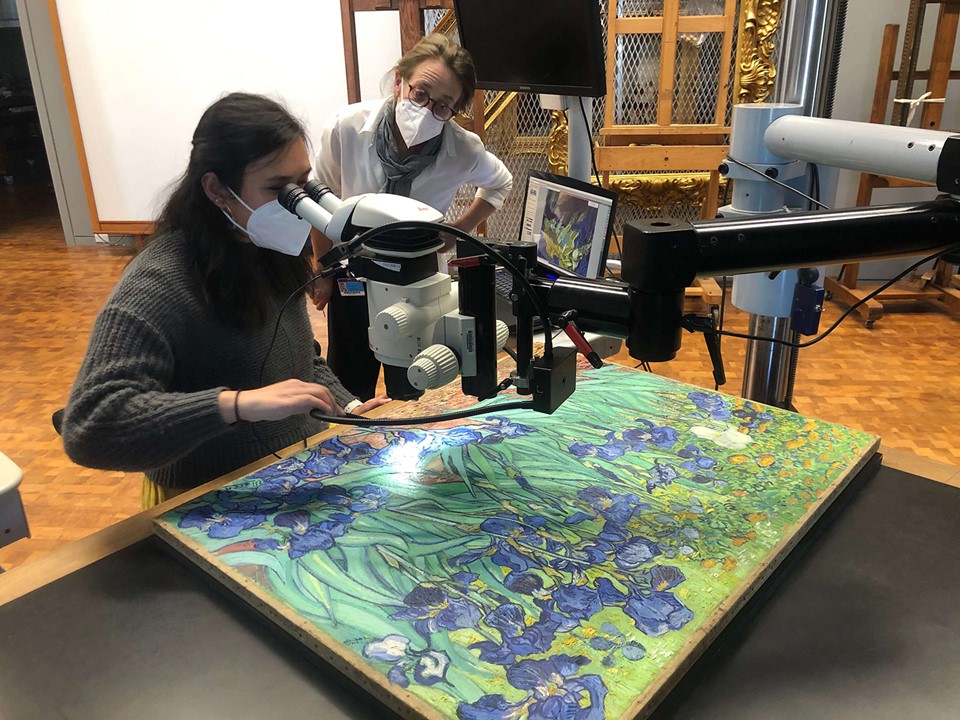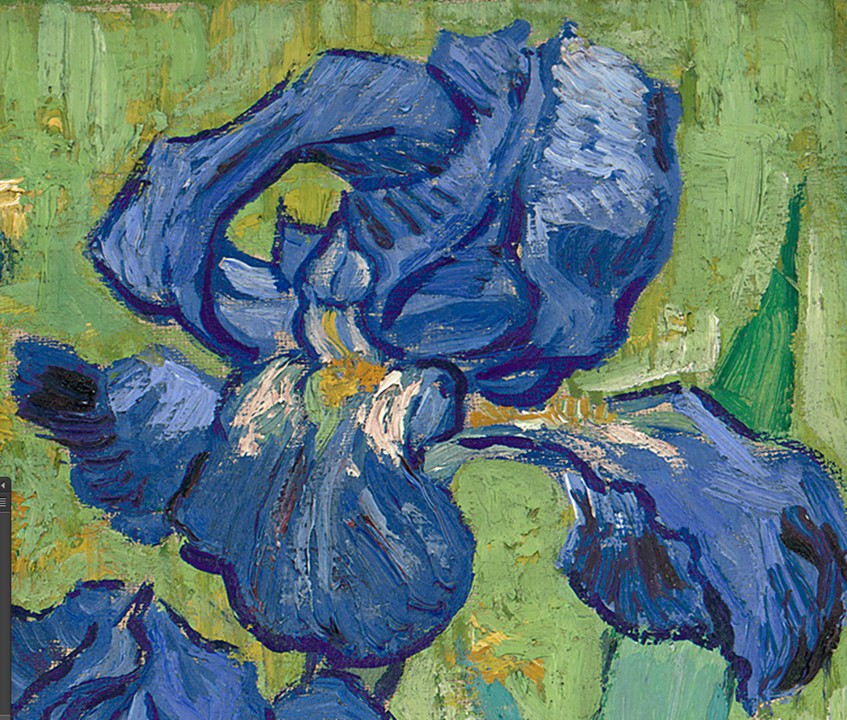
Irises, 1889, Oil on Canvas, 74.3 × 94.3 cm, The J. Paul Getty Museum, CA, USA https://www.getty.edu/art/collection/objects/826/vincent-van-gogh-irises-dutch-1889/
Well. Then we had the irises, rising beautiful and cool on their tall stalks, like blown glass, like pastel water momentarily frozen in a splash, light blue, light mauve, and the darker ones, velvet and purple, black cat’s ears in the sun, indigo shadow, and the bleeding hearts, so female in shape it was a surprise they’d not long since been rooted out… writes Margaret Atwood describing Serena Joy Waterford’s Spring Garden in The Handmaid’s Tale. Well, how can we best describe the Getty painting of Irises by Vincent van Gogh? https://www.skyminds.net/the-handmaids-tale-chapter-25-analysis/
In May 1889, write the Getty experts, after episodes of self-mutilation and hospitalization, Vincent van Gogh chose to enter an asylum in Saint-Rémy, France. Within the first week, he began Irises, working from nature in the asylum’s garden. These deep violet-blue coloured Irises are popularly known as Iris Vulgaris or Iris Germnica, and they seem to grow, even unattended, in Southern France, like in the overgrown “deserted” garden of the Saint-Rémy Asylum. https://www.getty.edu/art/collection/object/103JNH and https://books.google.gr/books?id=LUZ-dHerY3sC&pg=PA21&redir_esc=y#v=onepage&q&f=false, page 21
If you are wondering why van Gogh painted Irises… consider the following two reasons. Vincent van Gogh loved to paint flowers! They are colorful, and they allowed the artist to experiment with tints, and shades, intensity, and value. Like Eugène Delacroix, who he considered to be “the greatest colorist of all,” van Gogh used colour to offer contrasting effects and create depth by projecting specific parts of his paintings. The simplest explanation, however, is that Irises, magnificent in every aspect, were at the time available, in full bloom, in the Asylum garden… “begging” van Gogh to paint them! The artist considered the Getty Irises painting a mere study. His brother Theo, however, quickly recognized its quality and submitted it to the Salon des Indépendants in September 1889, writing Vincent of the exhibition: “[It] strikes the eye from afar. It is a beautiful study full of air and life.” Could these magnificent flowers provide the artist’s troubled psyche with feelings of hope? Did they help him ease the pain and temporarily appease his mental state? One can only hope! https://www.vangoghmuseum.nl/en/stories/looking-for-contrast#2 and https://www.getty.edu/art/collection/object/103JNH

Irises (detail), 1889, Oil on Canvas, 74.3 × 94.3 cm, The J. Paul Getty Museum, CA, USA https://blogs.getty.edu/iris/five-ways-of-seeing-van-goghs-irises/
The Vincent van Gogh Getty Irises painting is unique. He carefully studied the flowers’ movements and shapes to create a variety of curved silhouettes bounded by wavy, twisting, and curling lines. It is only right to mark that the French art critic Octave Mirbeau, one of Van Gogh’s earliest supporters, wrote: “How well he has understood the exquisite nature of flowers!” https://www.getty.edu/art/collection/object/103JNH
For a PowerPoint on Irises by Vincent van Gogh, please… Click HERE!
It is interesting to Watch the Getty Museum Video presentation Van Gogh’s Irises: A Closer Look… https://www.youtube.com/watch?v=gGgjAL9qVH4 and Read the results of this examination… https://www.getty.edu/news/a-rare-opportunity-to-study-van-goghs-irises/

Listen to a Getty Museum Podcast on Irises by Vincent van Gogh… https://dea3n992em6cn.cloudfront.net/museumcollection/000947-en-20120210-v1.mp3
Another interesting Video of an in-depth analysis of Irises by Vincent van Gogh… https://www.facebook.com/watch/?v=10155040353870097

Irises (detail), 1889, Oil on Canvas, 74.3 × 94.3 cm, The J. Paul Getty Museum, CA, USA https://creativepro.com/free-high-resolution-art-the-getty-museum/